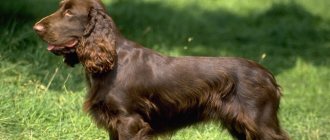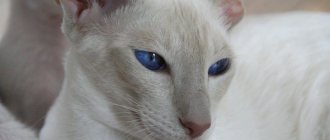History of the breed
In the distant past, the breed of butterfly dogs had only one name - the Continental Toy Spaniel. Then another name arose, which today is considered the main one - these are Papillons with erect ears, reminiscent of the wings of a moth. There is another variety of the breed, which differs from the first by its hanging ears - phalene.
Unfortunately, it was never possible to establish exactly when and in what year the history of the Papillons began. There are suggestions that butterfly dogs appeared about 800 years ago. There is also no consensus among researchers about the circumstances of the birth of the breed, about its first representatives. There are two versions regarding these issues:
1. In 1099, Godfrey carried out another crusade, it was then that the Duke brought a dwarf dog with ears like butterfly wings from Lower Lorraine to Jerusalem. 2. The first representatives of the Papillon breed appeared in the fourteenth century.
There was a very interesting and glorious period in the history of Papillons when such pets were called “the lap dog of queens and kings.” According to historical facts, butterfly dogs were the favorites of such royal, famous people as Louis 14, Louis 15, Louis 16, Marie Antoinette (ruler of France), and the Marquise de Pompadour.
Naturally, at that time the breed was at the peak of fame and popularity. King Henry III of France was also captivated by the beauty and unique mental abilities of the Papillon. Many representatives of the breed were kept at his palace; it is known that the monarch spent huge sums from the royal treasury on their maintenance and breeding work. There is an interesting legend regarding Henry III and his Papillons; whether there is some truth in it or is just fiction, it is impossible to say for sure:
“One day a monk came to Henry the Third. This visit was not an easy one, the monk’s mission was to kill the monarch. The most beloved butterfly dog in existence sensed danger and began barking loudly. Everyone decided that the animal was hysterical and expelled the king’s protector from the throne room, where the reception of the killer monk was to take place. As a result, the assassination attempt took place despite all the efforts of the devoted Papillon.”
In 1934, the breed standard was approved. Modern continental toy spaniels differ significantly from their distant ancestors, who lived in the royal chambers. The fact is that breeders at the beginning of the twentieth century came up with a wonderful idea. To improve the appearance of Papillons, they crossed representatives of this breed with Spitz dogs. The result exceeded all expectations.
The resulting offspring had an improved coat; it became much healthier and thicker. The coat of modern Papillons is luxurious and shiny. In addition, after crossing with Spitz dogs, the Papillon received a fluffy tail thrown over its back and well-furred ears.
Choosing a Falen puppy
In all countries of the world where continental toy spaniels are bred, the Phalene is less popular than the Papillon. The search for a puppy should begin by choosing a breeder or nursery that breeds this particular variety, possibly along with “butterflies”. The National Breed Club unites breeders and fanciers of Phalenes, but does not control breeding, so data on planned matings is most easily obtained at breed forms or exhibitions.
When choosing a puppy, pay attention to its behavior and appearance. The baby should be balanced, curious, not fearful, and outwardly absolutely healthy. It is recommended that the parents of the litter have tests for common diseases in the breed. You should also pay attention to the conditions in which the dogs are kept and feeding. If you plan to participate in exhibitions and breeding with a Phalene, you need to evaluate the puppy for compliance with the standard, but keep in mind that at the age of 2-3 months it is difficult to discern a champion in a baby. Before the year is over, many more unpleasant surprises can cut short your exhibition career. If you only need a companion and a pet, the requirements for appearance are not so high. In any case, the dog must have documents of origin (metrics and brand). Veterinary passport for notes on preventive treatments (vaccinations, etc.). It is advisable to pick up a small puppy no earlier than 2.5 months.
Breeding Features
The Papillon and Phalene are varieties of the same breed, the Continental Toy Spaniel. They can mate with each other, but breeders try to prevent this. Crossing Papillons and Phalenes often results in dogs with semi-erect ears, which is a disqualifying factor in the breed. But even without this, Phalenes are sometimes born in a litter of two Papillons.
If both parents of the Phalene are Papillons registered in the FCI system, then the “moth” will have to go through the breed determination ring and receive a new pedigree for Phalene.
Price
The price of a Phalene puppy varies over a very wide range. Pedigree puppies from nurseries for exhibitions and breeding usually cost from 60,000 rubles. If we talk about puppies with a pedigree, but with some kind of breeding defect, for example, in color, they are sold much cheaper. You can also find advertisements for the sale of babies at a price of 15,000-20,000 rubles. Usually these are puppies without documents, but perhaps from purebred parents.
Breed standard
The Continental Toy Spaniel is a small lap dog with a harmonious build and luxurious long hair. The height of adults is about 28 cm . Weight depends on the type of breed. The Papillon is sleeker and smaller than the Phalene, weighing between 1.5 and 2.5 kg . Phalene weight is from 2.5 to 5 kg .
A neat small head rests on a neck that is not too long, slightly curved at the back of the head. The ears are large and set wide apart. In Papillons they are erect and set high. The ears are open and look to the sides. According to the standard, resemblance to the ears of a Spitz (perpendicular set) is unacceptable. The dog's spectacular appearance is given by long strands of hair, reminiscent of a luxurious fringe and extending far beyond the edge of the ear.
Phalenes have drooping ears. Despite the fact that the ear is long, its hanging part is quite mobile. The beauty of this breed lies in the very long strands of hair that adorn the hanging part of the Phalene's ears.
Large dark eyes are not protruding, have the shape of wide almonds, and are wide open. The nose is round in shape, slightly flattened, and black in color. The muzzle is pointed, it is unacceptable for it to be upturned. The jaws are strong and have a scissor bite.
The back is straight, the lower back is slightly convex. The stomach is slightly tucked. The chest is wide. Limbs are strong, straight, parallel. They shouldn't be too long. The paws are long, “hare-shaped”, the nails are strong, the toes have strong pads. The movements are graceful, light, the gait is proud, “royal”. The high-set tail is decorated with long, luxurious hair, which gives the appearance of a fountain. It is long, thrown over the back or hip. A tail with a ring is not allowed.
The coat is of medium length, strong, shiny, wavy without curls. The guard hair is thin. There is no undercoat. There is a lush frill on the neck that covers the chest, luxurious fringe on the ears, and “pants” on the legs. On the tail the hair length can reach 15 cm , on the back – 7-8 cm .
The coat color is white with the addition of spots of different colors. The main color options are: tricolor, white and sable, black and white. According to the standard, pure white color and white ears are not allowed. There should be a white streak on the muzzle. With any color there is pigmentation of the nose, lips, eyelids. Also, in any case, white color prevails over complementary ones.
Papillon nutrition
Papillons are fed according to their age and size without overfeeding, so that they do not turn into a “square elephant”.
- In a Papillon of normal weight, you can feel the ribs.
- After eating, the dog should rest for good digestion of what it has eaten.
- To prevent the Papillon's posture from deteriorating, the bowl should be placed on a stand.
- To prevent pyogenic and pathogenic bacteria from appearing on the bowl, your pet’s bowl should be washed after eating.
- There should be a bowl of fresh water on a stand next to the food.
Food should always be fresh, since spoiled food leads to enteritis and poisoning. It should not be soft and frayed. For small puppies, it is chopped finely; for older puppies, it is cut into cubes that they cannot choke on, but can chew.
In the first year of life, good nutrition lays and forms strong bones, excellent coat, strengthens eyesight and sense of smell, and promotes growth. Proper nutrition is a guarantee of an excellent exterior for the Papillon. With a lack of food, rickets and blindness can develop, the wrong size of paws can form, and the coat will not be shiny and shiny, but will be sparse and short. With poor nutrition, the dog will be loose and raw, which is not typical for this breed.
Here's what you shouldn't feed your Papillon:
- food from your table - it contains too much salt and fat;
- boiled or raw bones, especially chicken bones - they injure the stomach and intestines and are not digested at all, which can lead to the death of the dog;
- salty and sweet food with spices and onions;
- fatty and fried foods, especially pork meat and lard, since you can “plant” the liver and pancreas, and pigs suffer from the same diseases as dogs;
- chocolate and chocolate candies - they can kill your pet;
- raw and even boiled milk - diarrhea will occur; milk porridges are cooked with the addition of water (2:1); smoked meats and fish with sharp bones.
Feeding Papillon puppies in the very first months after weaning from their mother's milk should be balanced with the necessary minerals, vitamins, proteins and fats for normal development and growth. Puppies are fed 5-6 times a day at certain times. By 6-7 months the dog is switched to 2 meals a day. After a year, you can feed a dog once a day, but many breeders continue to feed it twice - in the morning and at night.
Maintenance and care
Papillons are very gentle, vulnerable creatures that need comfortable, ideal living conditions. Representatives of the breed cannot tolerate high humidity and low temperatures; such conditions can cause health problems and even death. Therefore, it is strictly forbidden to keep them in the yard; such pets should bask in an apartment or in a house on a bed. For a miniature dog, you can even buy and install an entire house.
The Papillon loves to play and cannot stand being alone. To prevent your dog from getting bored, provide him with various toys, long-lasting vein bones, balls, etc. You need to walk your pet twice a day. In summer, walking time is unlimited; walk with your dog at least all day long, but not under the scorching rays of the sun.
In autumn and winter frosts, walks should not be long, as a small dog can freeze and catch a cold. If there is severe frost or rain, it is better to avoid walking altogether. In such a case, there should be a litter box in the house, which the dog is accustomed to from puppyhood.
At first glance at the luxurious fur of the Papillon, you get the impression that it is difficult to care for such a pet. In fact, there are no particular difficulties or problems with care, although the coat does take quite a lot of time to comb and bathe. Hygiene procedures are also needed to help maintain the beauty and health of the dog:
- Wool. We comb it daily using a special mitten and combs. Particular attention is paid to the fringe on the ears, frill on the neck and “pants”. It has been noted that the coat of black-and-white and red-and-white Papillons is much drier than that of other representatives of the breed, so it is recommended to buy special moisturizing creams. Bathe your pet when soiled using shampoos designed for dog hair. Such products help maintain the natural shine and richness of color. Human shampoo can be harmful and cause an allergic reaction.
- Claws. Trim as it grows. This procedure is complicated. If you are not experienced, you can injure the animal. Therefore, it is recommended to take the help of a specialist. Papillons have thick hair between their claws that needs to be trimmed regularly.
- Teeth. Clean regularly with a special paste purchased at a veterinary pharmacy. Brushing will help maintain healthy teeth and prevent bad breath.
- Ears. Once a week we wipe the ears with a special solution and inspect for inflammation or excessive ear discharge. If you notice these signs of infection, contact your veterinarian immediately.
- Eyes. Wipe, removing discharge from the eyes as needed. Make sure there is no inflammation or excessive discharge, if any, this may be a sign of illness.
We feed adult dogs 2 times a day, puppies, depending on their age, we feed them from 6 to 3 times a day. For normal growth and good health, the diet must be balanced, and the pet must also receive the right amount of vitamin and mineral supplements. If your dog eats dry food, it already contains all the additives.
One of the features of feeding Papillons is that they should absolutely not be overfed. Obesity can lead to serious health problems. In normal condition, the ribs of an adult Papillon can be easily felt. After each feeding, the pet should have the opportunity to rest and lie down. The diet should not contain sweets, bones, spices, smoked meats and leftovers from the master's table.
To ensure your pet has an even posture, place bowls of food and water on a stand. Adjust the height to suit the dog's height so that he does not bend over while eating or drinking. It is important to feed at the same time, water should always be available.
Features of keeping a pet
In order for the dog to feel good and please others, he needs:
- Own place. There he will sleep, he will go there on the command “place” and there he will hide his treasures - his favorite toys, especially tasty treats.
- Water bowl and food bowl. Moreover, it is of such a size that he does not have to bend over to them much or, on the contrary, reach out.
- Combs. Combing fur is not only a hygienic procedure, but also a gesture of caring.
- A toothbrush and ear wipes, plus a nail trimming kit.
- Harness. Papillons are not led on a leash - the neck is too sensitive, like all babies, a harness that wraps around the body is better.
- Overalls and boots for the winter.
And, of course, you can’t do without walking. You need to walk with your baby in the morning and evening, for an hour and a half. And not just walking, but playing, running, getting to know other dogs (toy spaniels are friendly and are drawn to all animals, so the owner needs to make sure that the pet does not run to meet the angry Rottweiler, for example). On weekends, you can go out of town to run. (For more details, see how long you should walk your dog per day).
And more games, chasing the owner and balls, jumping over obstacles, searching for a hidden object. Toy spaniels are easily delighted and the process of playing with them is not only enjoyable, but also looks funny from the outside.
Health
The average lifespan of Papillons is 13-17 years. But with proper care, dwarf dogs can live longer. There are known cases of longevity up to 19 years.
To prevent your dog from getting sick, it is necessary to get vaccinated on time and undergo preventive examinations with your pet, including tests at a veterinary clinic. Treatment for worms and skin parasites is also required.
The owner of a Papillon should familiarize himself with the list of diseases to which representatives of this breed are prone:
• Hypoglycemia – decreased blood glucose levels. • An open fontanel is a developmental defect or even a disease (hydrocephalus). • Patella dislocation . • Progressive retinal atrophy is a set of pathological processes with dystrophic degeneration of the retina. • Collapsing trachea is a condition that cannot be completely cured, but in most cases it can be controlled. • Entropion is an inversion of the eyelid, often observed in newborn puppies, and can be eliminated surgically. • Cataract – characterized by clouding of the eye lens. • Deafness – in most cases it is congenital.
Regarding the health and treatment of the Papillon, there is an important nuance. The fact is that representatives of the breed are extremely sensitive to anesthesia. Therefore, any surgical intervention must be approached very carefully, turning only to experienced veterinary specialists.
Life expectancy, health and major diseases
How long such a dog will live depends on its content. Papillons, despite their miniature and defenseless nature, are distinguished by their good health. The main problems arise from an incorrectly selected diet. Sometimes there are congenital problems associated with the eyes. Therefore, dogs often suffer from cataracts, entropion and corneal dystrophy.
It is very important to take your pets to the veterinarian regularly for general checkups. With careful attention to the health of butterfly dogs, they can live up to 15 years without serious illnesses.
Important! A small percentage of the breed is susceptible to a congenital disease - deafness.
To keep a pet you need bedding, two bowls, toys and other items
Character
Many ignorant people believe that decorative dogs do not have intelligence; they are like living toys, incapable of thinking. In fact, this is not so; although Papillons are miniature, they are extremely smart and quick-witted. In the list of the smartest dogs in the world, this breed ranks eighth.
The Papillon becomes tightly attached to its owner; it cannot be without it for a long time and is jealous of everyone. If he is at home, the dog always tries to be nearby, while subtly sensing the owner’s mood and adapts accordingly. By leaving such a pet alone or with strangers for a long time, you expose it to the danger of stress and even serious illness.
The Papillon treats children well, being playful by nature, the dog enjoys playing with kids. It is not recommended to leave a child and a dog alone. Children can inadvertently harm a fragile animal, or they, in turn, may bite for the offense. So their games should be supervised by adults.
The Papillon's character is formed depending on his upbringing. If from puppyhood you do not teach your pet the rules of behavior, both in the house and in public places, he can become uncontrollable and even aggressive. An untrained Papillon may bite; this behavior will become a habit. So early socialization and education are necessary.
Diseases
These lively and active dogs also have weak points. You need to carefully monitor your pet’s health and, if anything happens, immediately contact a veterinarian.
The most common Papillon diseases are:
- entropy;
- congenital deafness;
- progressive retinal atrophy;
- dislocation of the kneecap;
- hypoglycemia;
- cataract;
- reverse sneezing.
Very often, representatives of this breed experience dislocation of the kneecap. There is also a bilateral dislocation (or in the medial direction). In severe cases, it may be necessary to resort to surgery, otherwise the animal will limp for the rest of its life.
Genetic diseases include progressive retinal atrophy. First, the sick animal loses night vision, and after a while, day vision also deteriorates. To identify the disease, special tests are used. This disease leads to complete loss of vision.
If we talk about such a disease as deafness, then it can be both congenital and acquired. If a dog contracts an infection during pregnancy, there is a possibility that some of the cubs may be born deaf. Otherwise, the animal may get sick and gradually lose hearing, so you need to constantly check the dog’s ability to hear.
Training and education
The butterfly dog is rightfully considered one of the smartest and easiest to train. She is very inquisitive, active and smart. She has an excellent memory, which allows her to quickly remember commands. The Papillon is an eternal child; even at an advanced age, the dog loves to play and frolic. Based on this, the training program should be organized in a playful way.
Never make concessions, always ensure that the dog follows the command. At the same time, you should not shout or hit the dog. The Papillon can be offended by even one shout from you. Be clear and confident about what is required of him. An intelligent dog will quickly master the science, for which do not forget to reward with treats or stroking.
Interesting Facts
- Translated from French, Papillon sounds like “butterfly”.
- Papillons were highly prized in the royal courts of France.
- Paintings by medieval artists (Rubens, Boucher, Fragonard, etc.), depicting papillons, are in the most famous museums in the world.
- Not a single portrait of Marie Antoinette was painted without the presence of a butterfly dog.
- For several decades, the Papillon has been ranked eighth in the ranking of the most intelligent breeds.
Description and features
The Papillon dog is very gentle. She treats every member of the household with care. She doesn't know aggression. It's hard to believe, but such a charming creature can easily perform security tasks.
Yes, it is pointless to train a butterfly dog like an East European Shepherd, since due to its nature it will never be able to seriously repel robbers or other criminals. However, this animal is incredibly brave and purposeful.
If it feels threatened in the house, it will no doubt rush to the defense of loved ones and dear people. They are of great value to her. The Papillon protects, loves and respects its family. He develops trust in every person who lives with him. Isn't this wonderful?
This doggie will add variety to anyone’s weekdays. He is cheerful, curious and very cute. Ladies can go out with him, children can play catch or catch, and men can watch TV together.
If you are a lover of outdoor activities, the Papillon is definitely your option. Some dog breeders organize various competitions for their pets, and this mischievous and gentle dog is a frequent guest at them.
Do not forget that the main mission of continental spaniels in medieval Europe was to bait mice and rats. But it is difficult to imagine a modern representative of this breed as a hunter of small pest animals.
It is enough to watch him for a few minutes to be convinced of his good nature and incredible charm. Having passed through the centuries, this breed has changed a lot. She has lost her natural aggression towards some tailed animals and has developed a great love for people, and not only for her owners.
There is no single version of the origin of this type of dog. Most experts are inclined to believe that the Papillon breed is a type of standard spaniel, a dwarf one.
It’s hard to argue with this, because both dogs really have a lot in common, and it’s not just about appearance. These dogs gained enormous popularity in their homeland, France. There, for the first time, a club of their lovers was organized, as well as nurseries for breeding and sale.
Pros and cons of the breed
Papillons are suitable for any family, but there are some features of their maintenance and character that you need to pay attention to before buying such a pet. This dog is very loyal, if you do not have the opportunity and desire to spend enough time with your dog, this breed is not for you. If you want to have a loyal, cheerful, smart friend nearby, feel free to go for a Papillon puppy. To make the right decision, check out the top pros and cons of butterfly dogs.
Advantages:
1. Spectacular appearance. 2. Devotion. 3. Friendly disposition, playfulness. 4. Ideal for apartment living. 5. Does not require mandatory walks, quickly gets used to the toilet lot. 6. Intelligence and intelligence, easy to learn. 7. Cleanliness. 8. Sheds little. 9. Barks very rarely, only in extreme cases.











